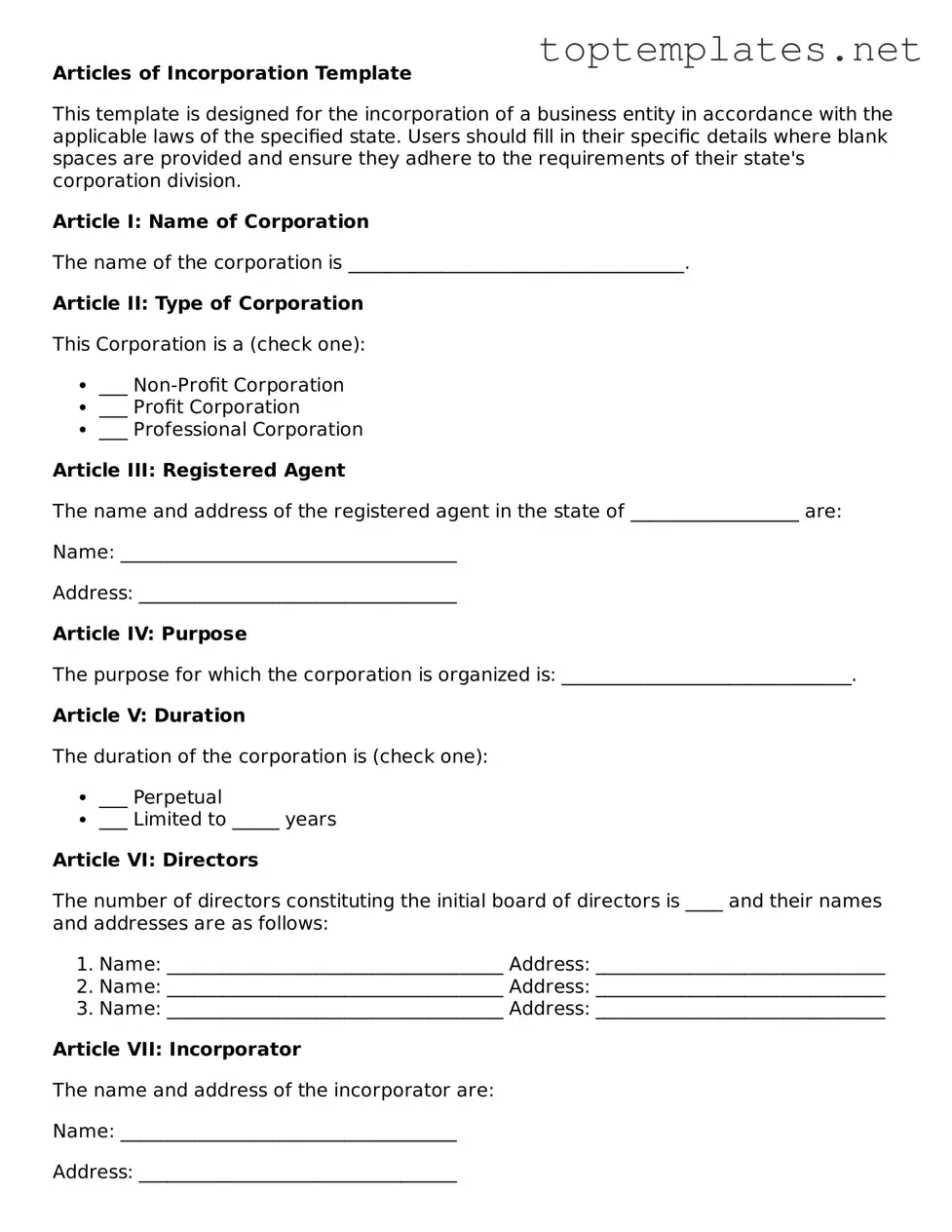Articles of Incorporation Template
This template is designed for the incorporation of a business entity in accordance with the applicable laws of the specified state. Users should fill in their specific details where blank spaces are provided and ensure they adhere to the requirements of their state's corporation division.
Article I: Name of Corporation
The name of the corporation is ____________________________________.
Article II: Type of Corporation
This Corporation is a (check one):
- ___ Non-Profit Corporation
- ___ Profit Corporation
- ___ Professional Corporation
Article III: Registered Agent
The name and address of the registered agent in the state of __________________ are:
Name: ____________________________________
Address: __________________________________
Article IV: Purpose
The purpose for which the corporation is organized is: _______________________________.
Article V: Duration
The duration of the corporation is (check one):
- ___ Perpetual
- ___ Limited to _____ years
Article VI: Directors
The number of directors constituting the initial board of directors is ____ and their names and addresses are as follows:
- Name: ____________________________________ Address: _______________________________
- Name: ____________________________________ Address: _______________________________
- Name: ____________________________________ Address: _______________________________
Article VII: Incorporator
The name and address of the incorporator are:
Name: ____________________________________
Address: __________________________________
Article VIII: Stock
If the corporation is authorized to issue stock, the total number of shares of all classes of stock that the corporation shall have the authority to issue is: __________ shares.
The corporation is authorized to issue the following classes of stock:
- Class: ____________ Number of Shares: ________ Par Value: $______
- Class: ____________ Number of Shares: ________ Par Value: $______
Article IX: Incorporation State Specific Provisions
Any additional provisions specific to the state of _________________________ are attached herein.
Confirmation
By signing below, the incorporator certifies that the information provided in these Articles of Incorporation is true and correct:
Signature: _______________________________ Date: ________________
